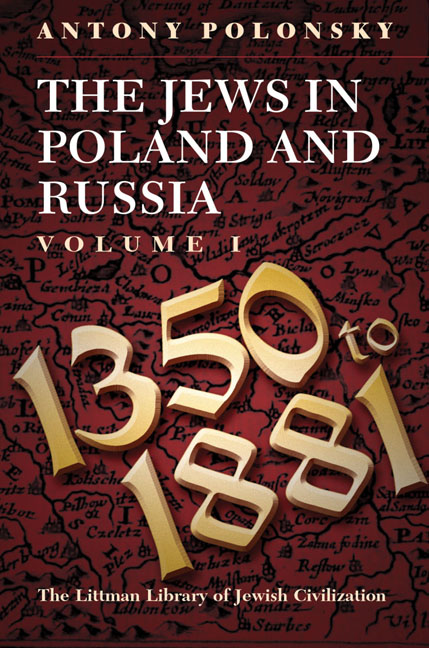Book contents
- Frontmatter
- Dedication
- Acknowledgements
- Contents
- List of Maps
- List of Tables
- Note on Transliteration
- Note on Place Names
- Maps
- General Introduction
- PART I JEWISH LIFE IN POLAND–LITHUANIA TO 1750
- PART II ATTEMPTS TO TRANSFORM AND INTEGRATE THE JEWS, AND THE JEWISH RESPONSE, 1750–1880
- Glossary
- Bibliography
- Index
Introduction
- Frontmatter
- Dedication
- Acknowledgements
- Contents
- List of Maps
- List of Tables
- Note on Transliteration
- Note on Place Names
- Maps
- General Introduction
- PART I JEWISH LIFE IN POLAND–LITHUANIA TO 1750
- PART II ATTEMPTS TO TRANSFORM AND INTEGRATE THE JEWS, AND THE JEWISH RESPONSE, 1750–1880
- Glossary
- Bibliography
- Index
Summary
THE MIDDLE OF THE EIGHTEENTH CENTURY was a major turning point in the history of the Jews in Europe. Under the influence of the philosophy of the Enlightenment, many rulers now began to initiate attempts, carried still further by their constitutional successors in the nineteenth century, to transform the Jews from members of a religious and cultural community into ‘useful’ subjects, or, where a civil society had been established, into citizens. This process was also a feature of the last years of the Polish–Lithuanian Commonwealth and was continued after the partitions by the governments which ruled the lands of the former Rzeczpospolita. In examining the way these developments affected the Jews of the Polish lands, it is important to emphasize that this was a process which was taking place all over Europe, as well as in America and Asia, and that the process of Jewish integration is part of a larger phenomenon, involving the emergence of representative government and the creation of an industrial economy. In addition, other social groups, most notably peasants, were subject to government attempts to transform them into ‘useful’ members of society.
For the process of Jewish integration to be successful, two conditions needed to be present: governments had to be willing to accept the Jews ‘on certain conditions’ as citizens, or in autocracies as ‘useful subjects’, and there needed to be a group of Jews who were willing to respond to the possibility of integration.
The terms for describing this process have often been vague and, as a result, it is necessary to define them more precisely:
Integration can be divided into two subcategories: political integration and social integration. Political integration involves the acceptance of some or all of the Jews as citizens with political rights. Social integration means their full participation in all aspects of the life of the society, political, economic, and social.
Emancipation, a term made popular by Marx and other political radicals, referred, by analogy to the position of slaves in the European overseas empires, to the abolition of restrictions affecting unfree peasants and Jews. Since the Jews were never slaves, it is more of a metaphor than a useful term of analysis, although it was widely used in the nineteenth century and subsequently.
- Type
- Chapter
- Information
- The Jews in Poland and RussiaVolume I: 1350 to 1881, pp. 183 - 190Publisher: Liverpool University PressPrint publication year: 2009



